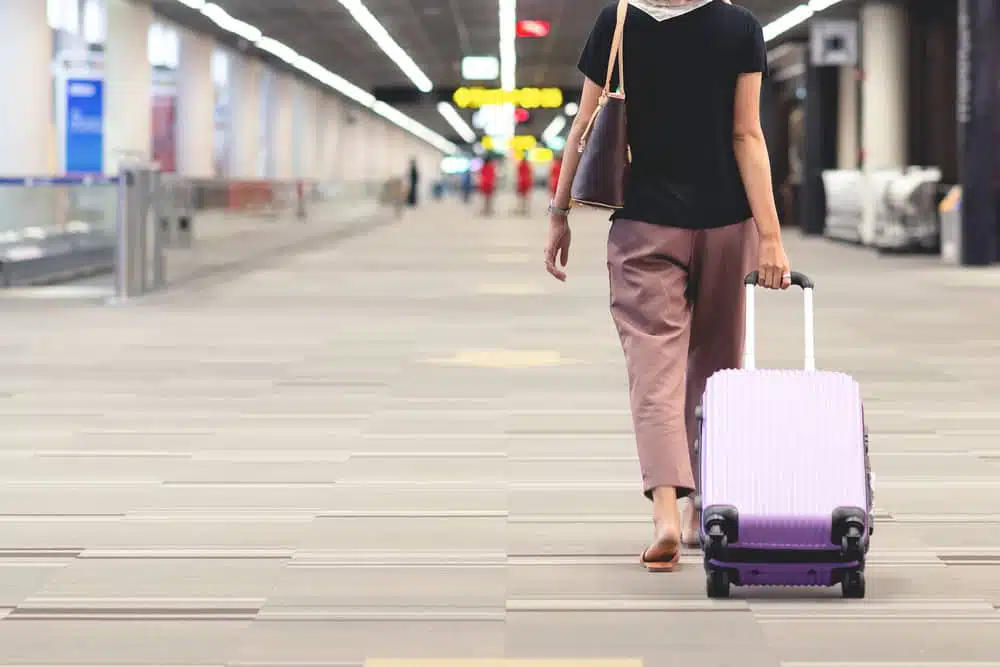Have you been dreaming about reclaiming your pre-pregnancy body and planning a well-deserved getaway to celebrate your transformation? A Mommy Makeover can be the perfect confidence boost, giving you back your shape, your confidence, and your spark. But if travel is on your mind, timing is everything.
Whether you’re headed on a vacation to relax or need to return home post-surgery, knowing ” how soon can I fly after a mommy makeover?” is crucial to protecting your health and ensuring optimal results. Keep reading to explore the safest timeline for plane travel after a Mommy Makeover and what steps to take before booking that ticket.

The Travel Timeline: How Soon Can I Fly After a Mommy Makeover?
We advise our patients to avoid flying for a minimum of 15 days after surgery. This “grounding” period applies to long car or bus trips too, not just air travel. That’s because flying after surgery increases your risk of blood clots, pulmonary embolism, and deep vein thrombosis. Since a Mommy Makeover is a major procedure, especially when it includes a tummy tuck, we often extend the no-fly window to four or even six weeks after surgery, depending on your unique case. Over-exertion and long periods of immobility can compromise your recovery, so it’s essential to follow your surgeon’s personalized recommendations.
Tips for a Comfortable Flight After Surgery
Flying after surgery isn’t just about when you’re allowed to travel—it’s also about how you do it. Once your surgeon clears you for takeoff, there are several steps you can take to make the experience safer and more comfortable.
From planning your route to dressing smartly and moving frequently, the following tips are designed to help protect your results and minimize post-op risks while you’re in the air. Keep these guidelines in mind to fly with confidence and care.
1. Prepare a Travel Plan
Traveling after a Mommy Makeover procedure takes more than just booking a flight—it requires thoughtful coordination with your surgical team. Start by confirming your travel dates with your surgeon well in advance and discuss whether your timeline aligns with a safe recovery period. Share your flight details, hotel arrangements, and transportation plans to receive personalized advice. Planning ahead helps minimize unexpected issues and ensures you have everything in place—from medications to follow-up care—before takeoff. The more organized you are, the smoother and safer your journey will be after surgery.
2. Wear Comfortable Clothes
Comfort is key when it comes to post-surgical travel attire. After a Mommy Makeover, your body may be swollen or tender in specific areas, so opt for loose, breathable fabrics that won’t rub or irritate your incisions. Soft cotton or stretch materials are ideal, especially if you’re wearing compression garments underneath. Avoid tight waistbands, buttons, or zippers that could press against healing areas. Slip-on shoes are also a smart choice to reduce bending and straining. Your outfit should support your recovery, not work against it, so choose comfort over style for the flight.
3. Compression Garment Wear
Wearing your compression garment during travel is more than just a comfort measure—it’s a critical part of your post-op recovery. These garments help reduce swelling, support healing tissues, and improve circulation, which is especially important when sitting for extended periods during a flight. Make sure your compression garment fits properly and follow your surgeon’s specific instructions for wear time during travel. Avoid substituting or skipping it altogether, even if it feels snug. The extra support it provides can make a significant difference in how you feel during your trip and how well you heal afterward.
4. Stay Hydrated
Air travel can be surprisingly dehydrating, especially after surgery. Cabin pressure and dry air can intensify post-op swelling and discomfort, making hydration a top priority. Be sure to drink plenty of water before and during your flight to support healthy circulation and help your body manage inflammation. Skip caffeine and alcohol, as they can contribute to dehydration and interfere with healing. Keeping a refillable water bottle with you can make staying hydrated easier. Good hydration promotes tissue recovery and can make you feel noticeably better during your trip.
5. Check Your Seat
Choosing the right seat can make a big difference in your post-op travel experience. If possible, opt for an aisle seat to make it easier to get up and move around. Avoid seats with limited legroom, as being cramped for long periods can increase the risk of swelling and blood clots. Consider bringing a small cushion or lumbar support to reduce pressure on your back and abdomen. If you had a tummy tuck, you may need to sit in a slightly reclined position, so speak with your surgeon about any special seating needs before your flight.
6. Take Walks During Breaks
Staying seated for long periods can slow circulation and increase the risk of blood clots, especially after surgery. That’s why taking short, frequent walks during your flight is essential. Once it’s safe to move about the cabin, try walking the aisle every hour or so to promote healthy blood flow and reduce swelling. If you’re on a layover or waiting at the gate, use the opportunity to stretch your legs rather than staying in one spot. These small movements can go a long way in supporting your recovery and keeping you more comfortable throughout your journey.
7. Bring Pain Relievers Just In Case
Even if you’re feeling great before your flight, it’s wise to travel with your prescribed pain medications—just in case. Air travel can sometimes bring unexpected discomfort, especially after major surgery like a Mommy Makeover. Changes in cabin pressure, prolonged sitting, and general travel stress may aggravate sensitive areas or healing incisions. Make sure any medications are in your carry-on and clearly labeled. Taking a dose before takeoff, as directed by your surgeon, can help you stay ahead of any mid-flight discomfort and make your journey smoother and more manageable from start to finish.
8. Follow Your Surgeon’s Recommendations
No travel tip matters more than this one: listen to your surgeon. Every patient’s recovery is unique, and your plastic surgeon knows the details of your procedure and healing timeline best. If they recommend waiting longer before flying or advise specific restrictions, take them seriously. Your surgeon can also offer tips tailored to your personal recovery, such as how to sit, move, or manage discomfort during the trip. Ignoring medical advice can jeopardize your results and lead to complications, so let your surgeon’s guidance be the final word in your travel decisions.
SPECIALIST CARE YOU CAN TRUST
You can trust the entire staff to help make your visit as comfortable and safe as possible!
Potential Risks of Complications of Air Travel After Surgery
Even after you’re cleared to fly, it’s essential to understand that post-surgical air travel still carries certain health risks, especially after a complex procedure like a Mommy Makeover. These potential complications aren’t guaranteed, but they are serious enough to warrant extra caution and planning. Being aware of what can go wrong helps you take the right steps to reduce your chances of facing setbacks.
Postoperative complications may include:
- Deep Vein Thrombosis (DVT): Prolonged immobility on flights can lead to dangerous blood clots forming in the legs.
- Pulmonary Embolism: A blood clot that travels to the lungs, potentially life-threatening and closely linked to DVT.
- Swelling and Discomfort: Cabin pressure and prolonged sitting can intensify post-op swelling, especially after abdominoplasty.
- Delayed Healing: Physical strain from traveling too soon may interfere with proper wound healing or stress surgical sites.
- Infection Risk: If incisions are not fully healed, travel may expose you to bacteria in crowded or unsanitary environments.
- Fatigue and Dehydration: Traveling can be physically taxing, making it harder for your body to recover efficiently.
Before and After Photos


* Each patient is unique and individual results may vary.
Schedule a Consultation with a Body Plastic Surgery Expert
When it comes to procedures as extensive as a Mommy Makeover, choosing a highly qualified and experienced surgeon is critical to your safety and your results. The risks of complications, especially with travel arrangements at hand, make expert surgical planning and post-op care non-negotiable. You want a specialist who understands how to tailor recovery timelines to your unique body and goals.
At Aesthetic Surgical Images in Omaha, you’ll find exactly that. Our team of four board-certified plastic surgeons brings together decades of combined expertise, each with a unique perspective that enhances collaborative results. Every one of our surgeons is ACLS certified, ensuring the highest safety standards for surgical care. Ready to take the next step? Call us at 402-390-0100 or visit our contact page to schedule your personal consultation.
